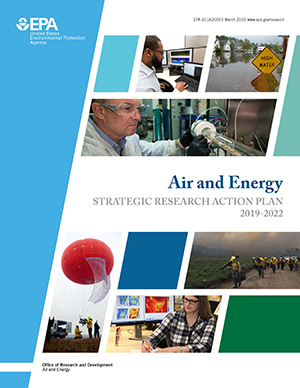 Approximately 120 million people in the United States live in counties that do not meet the National Ambient Air Quality Standards for at least one of the six criteria air pollutants, even as emissions of these pollutants have been reduced by more than 70 percent over the past 45 years. Other emerging air pollutants, growing impacts from sources such as wildfires, increasing diversity in the Nation’s energy portfolio, and broader changes in land use, transportation, and climate, further complicate our understanding of the measures needed to improve air quality now and into the future. These increasingly complex problems require innovative thinking and sustainable solutions to ensure that EPA can protect human health and the environment.
Approximately 120 million people in the United States live in counties that do not meet the National Ambient Air Quality Standards for at least one of the six criteria air pollutants, even as emissions of these pollutants have been reduced by more than 70 percent over the past 45 years. Other emerging air pollutants, growing impacts from sources such as wildfires, increasing diversity in the Nation’s energy portfolio, and broader changes in land use, transportation, and climate, further complicate our understanding of the measures needed to improve air quality now and into the future. These increasingly complex problems require innovative thinking and sustainable solutions to ensure that EPA can protect human health and the environment.
The Air and Energy (A-E) Strategic Research Action Plan outlines research to address EPA's strategic objectives and mandates to improve air quality and protect public health and the environment. A-E research activities are structured under three inter-related topic areas: (1) Science for Air Quality Decisions; (2) Extreme Events and Emerging Risks; and (3) Next-Generation Methods to Improve Public Health and the Environment. Many scientific issues cut across the entire A-E research program.
You may need a PDF reader to view some of the files on this page. See EPA’s About PDF page to learn more.- Air and Energy Strategic Research Action Plan FY 2019-2022 (PDF)(44 pp, 4 MB, March 2020, EPA 601K20003)
